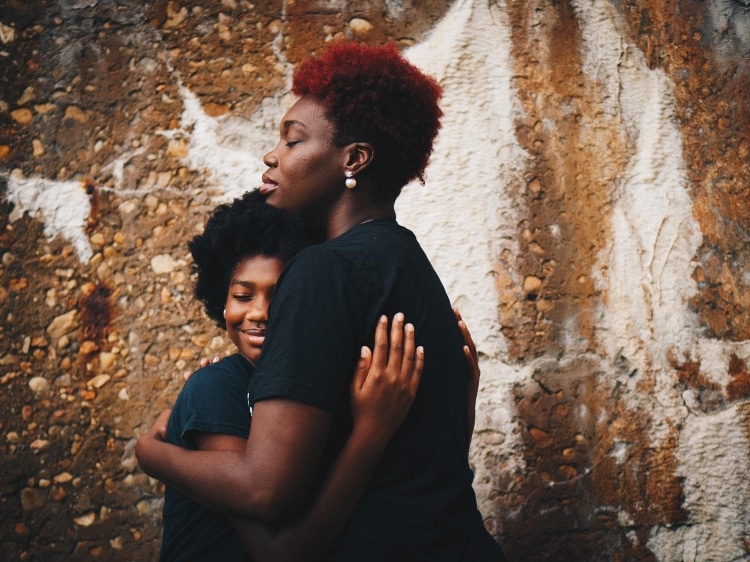Our children become adults faster than we imagine they will when they are young. Yet while the transition might seem swift to us, many teenagers struggle as they learn to navigate what this evolution means for them. In today’s modern world, with infinite possibilities and rapidly evolving societies, it is becoming increasingly difficult for our youth to find their place.
While mindfulness is not the only tool that teenagers can use to manage their transition into adulthood, it is an important one – one that empowers, uplifts, and is always at their disposal. Teaching mindfulness to teenagers is one of the greatest gifts we can offer to our youth – and, it is a gift that will keep on giving.

How Mindfulness Benefits Teenagers
From pressure to perform academically to pressure to fit in with one’s social group, teenagers have a lot to navigate. What will they study? What will they do post-graduation from high school? What are their core values and innate gifts? Where will they find their authentic place in this world?
All of these questions (and the rest that come with them) can be a tough load for teenagers to carry. Many teenagers struggle with anxiety, depression, low self-esteem, chronic stress, and other conditions that impede their ability to enjoy their youthful years.
While mindfulness is not a fix-all for the above concerns, it can certainly enhance self-awareness and provide teenagers with certain tools to more effectively navigate their experience. In fact, studies have shown that mindfulness can be of benefit to youth in the following ways
By providing teenagers with the tools of mindfulness, we equip them to better recognize what they are going through and to more effectively navigate any challenges that arise. Mindfulness is entirely free and always accessible, so it is something that teenagers can continually return to – whether guided or on their own.

“If you want to conquer the anxiety of life, live in the moment, live in the breath.”
- Amit Ray-
Download 300 mindfulness worksheets to explore with those that you love or teach.

How Do I Teach My Teen Mindfulness?
If you wish to teach mindfulness meditation to your teenager (or to a group of teenagers), it is important to be thoughtful about how you approach it. Consider the demographic and the unique needs of those you will be working with. What mindfulness practices and methods of delivery make the most intuitive sense to you?
Here are some tips for you to consider the next time you are teaching mindfulness to teenagers, whether at home, at school, or in some other setting:
Engage teens with an anecdote that is relevant to their experience.
One great way to get teens interested in mindfulness is to offer them a story that they can relate to. For example, did you struggle with anxiety when you were in high school? Did you take more time than your peers to figure out what career path was best suited to you? Tell a story that makes a connection between you and them. Show them your humanity. Offer them something that might lead them to think, “This mindfulness thing might be good for me.”
Ensure that your teachings are flexible and non-dogmatic.
Another consideration to make is the fact that teenagers (as much as or more than anyone else) do not like to be told what to do. Rules are often good for them, but they like to play around with boundaries; they like to have some freedom. When teaching mindfulness to this demographic, make space for them to explore the practices in their own way. For instance, you might note that movement during meditation is not bad or wrong, but invite them to take pause before moving and to grant each movement their full attention.
Increase engagement and efficacy by offering a variety of different practices.
Furthermore, it is important to consider that each teen you teach mindfulness meditation to will gravitate towards some practices more than others. For this reason, particularly when teaching to a group, it is helpful to offer a range of different techniques and practices. For example, you might offer them three different anchors to choose from: the floor or chair beneath them, the flow of their breath, or a grounding word or phrase to repeat (i.e. ‘I am here’ or ‘peace’). Exploring a range of practices will also help to keep them engaged and learning. Fortunately, mindfulness exercises for teenagers come in many different shapes and forms.
Expect laughter, distractions, or other signs of resistance.
Additionally, when teaching mindfulness to teenagers, be prepared for anything. Some teens (or groups of teens) will be naturally drawn into the practice. Others might resist, find the silence incredibly uncomfortable, or struggle to remain focused. This will also shift from day to day for each teenager. Be patient, open, and compassionate towards whatever arises.
Model mindfulness beyond formal teachings.
Lastly, remember that, just like children, teenagers learn a lot from the everyday actions of those around them. As a parent or teacher, the way that you engage with your own life will influence them greatly. So, be mindful of how you are exemplifying mindfulness outside of formal practice. Model mindful ways of being, such as mindful listening, wise action, honesty, vulnerability, and self-awareness.
Enhance your ability to teach mindfulness meditation by becoming a certified mindfulness teacher.

7 Mindfulness Exercises for Teenagers
If you are looking to take the next step and to share certain mindfulness teachings with the teenagers in your life, consider the following exercises as a reference point. You can adapt these practices as suits the group or individual you are working with. Remember that there is no ‘right way’ to teach mindfulness. Simply do your best to meet your teenagers where they are that – and to listen and learn in return.
Create breathing space.
First and foremost, you can help teenagers to slow down and to tune inwards by acquainting them with the breath. Though it is ever-present, most youth do not mindfully tune into the flow of this life force. By teaching them how to, you offer them a simple tool that they can turn to whenever they feel stressed, overwhelmed, or simply need to slow down. A simple 5-minute breathing exercise is a wonderful meditation for teenagers to learn to do on their own.
TRY THIS MEDITATION FOR INSPIRATION: Breathing Space by Vidyamala Burch
Nourish self-confidence.
Since many youth struggle with self-confidence and self-worth, a great meditation for teenagers is one that strengthens their sense of unconditional worthiness. This type of practice is not about self-inflation. It is simply an invitation to enhance confidence in oneself – to see that each one of us is innately loved and worthy.
DOWNLOAD THE FREE MEDITATION SCRIPT: Teen Meditation to Believe in Yourself
Tune into the physical body.
Another way to practice mindfulness is to tune in to the physical body. Basic body scans (or compassionate body scans) are an excellent tool to help youth step out of the thinking mind and into the visceral body. This can enhance self-awareness and loving action towards oneself.
DOWNLOAD THE FREE MEDITATION SCRIPT: Grounding Body Scan
Tune into nature.
Mindful time spent in nature can also be of great benefit to teenagers (and to all humans, in fact). Most teenagers in the modern world do not grow up with a strong connection to the natural world. Through mindfulness, you can offer this to them. Consider mindful nature exploration activities or nature gazing practices.
DOWNLOAD THE FREE WORKSHEET: Nature Gazing From Roots to Sky

Teach self-compassion.
A close relative of mindfulness, compassion is another excellent skill to teach to teenagers. Equip them with the know-how to take ‘breaks for self-compassion’ when they need to. This is undoubtedly a gift that will support and nourish them as they move through life. It will help them to nurture themselves from within.
DOWNLOAD THE FREE MEDITATION SCRIPT: A Break for Self-Compassion

"Your task is not to seek for love, but merely to seek and find all the barriers within yourself that you have built against it."
- Rumi-
Get to know the emotional body.
Another supportive mindfulness practice to share with teenagers is one that enhances their ability to witness their emotions without becoming carried away by them. For instance, you can teach them how to label emotions by directly noting ‘sadness’ rather than mentally repeating ‘I am sad.’
DOWNLOAD THE FREE WORKSHEET: Clarifying Emotions
Cultivate gratitude.
Lastly, teaching youth how to cultivate gratitude will be of great benefit to their overall mental wellbeing. This can be explored through mindful journaling exercises followed by opportunities to share. Note that gratitude is not about disregarding the struggles of life; it is simply about training the mind to see more of the good.
DOWNLOAD THE FREE WORKSHEET: Gratitude Journal

"Gratitude unlocks the fullness of life. It turns what we have into enough, and more. It turns denial into acceptance, chaos to order, confusion to clarity."
- Melody Beattie-
Explore 7 more mindfulness practices to share with students.


















